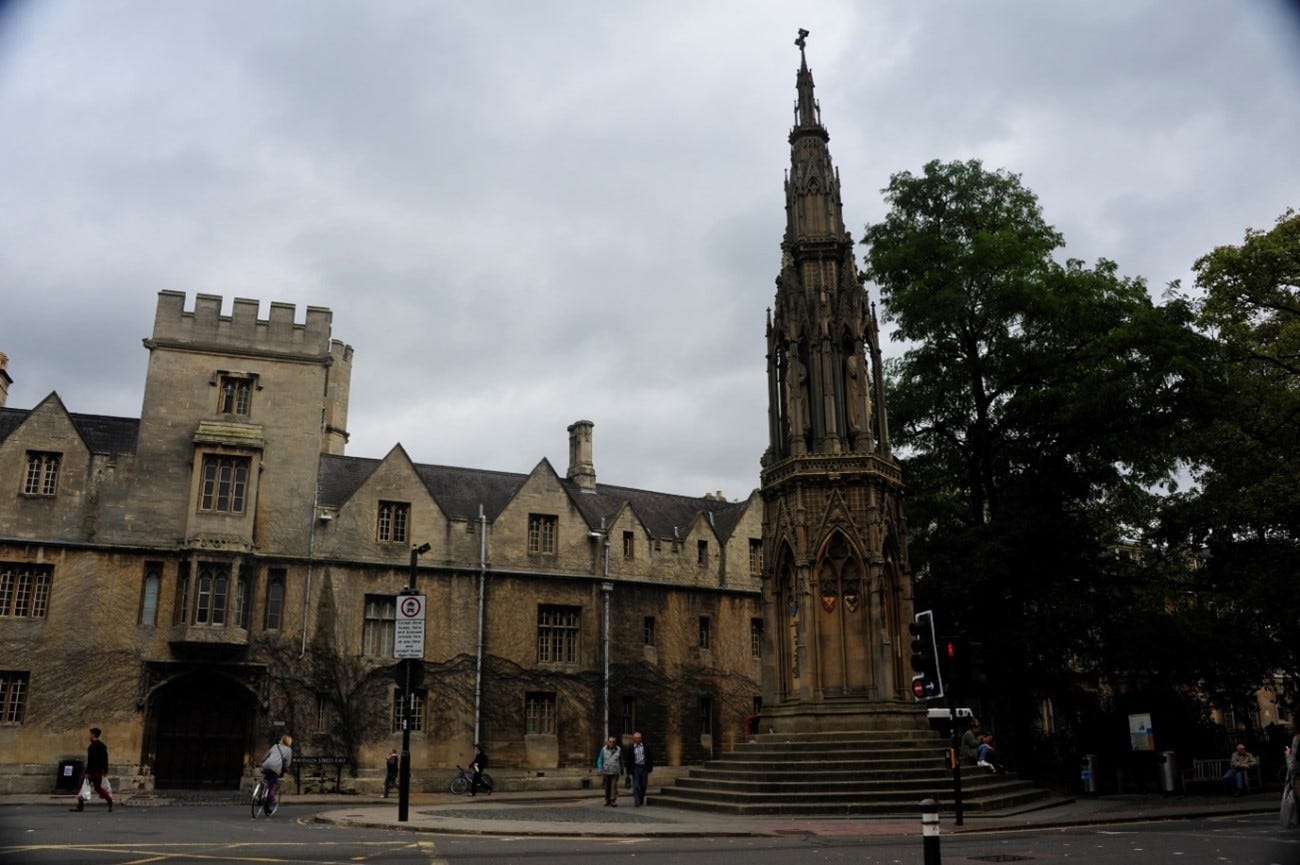Table of Contents
A Halfling’s View
Introduction
A commentator who has adopted the name Thomas Cranmer has been causing something of a stir with his articles which have appeared on Substack and Twitter. I follow Cranmer on Substack and enjoy his writing. He is thoughtful and thorough and bases his conclusions on hard documentary evidence.
In this piece, I discuss the historical Cranmer and draw a few conclusions about the purpose of the identification of Cranmer. I am not going to discuss Cranmer’s real-world identity. I know him and have spoken with him. But he has chosen to adopt a nom de plume which is something writers have done through the centuries, and I shall refer to him in this piece by the name he has chosen.
The exposes
‘Cranmer’ was the first to reveal TVNZ was paid $300,000 by a Government agency to air a series of climate change pieces. While sponsored content is nothing new or especially controversial according to Shayne Currie TVNZ will strengthen its labelling of such content on its Breakfast show. One can only speculate why it was that it took a “citizen journalist” to prompt this sudden and unexpected move to transparency on the part of our State broadcaster.
In addition, Cranmer carried out an analysis of the so-called “Three Waters” legislation and especially the approach to co-governance. His conclusions seemed to be at odds with the message that was being put about by the Government.
This attracted the attention of the mainstream media and especially Daniel Dunkley of the Herald’s Business Desk who trumpeted Cranmer’s identity. Currie described him as:
“the pseudonymous blogger and social media user who has been revealing a string of his own scoops recently.”
But before we explore that, most readers will be aware that there was a historical Thomas Cranmer who played a significant role during the reign of three Tudor monarchs
The Historical Cranmer
Thomas Cranmer was a leader of the English Reformation and Archbishop of Canterbury during the reigns of Henry VIII, Edward VI and, for a short time, Mary I. He helped build the case for the annulment of Henry’s marriage to Catherine of Aragon, which was one of the causes of the separation of the English Church from union with the Holy See. Along with Thomas Cromwell, he supported the principle of royal supremacy, in which the king was considered sovereign over the Church within his realm.
During Cranmer’s tenure as Archbishop of Canterbury, he was responsible for establishing the first doctrinal and liturgical structures of the reformed Church of England. Under Henry’s rule, Cranmer did not make many radical changes in the Church, due to power struggles between religious conservatives and reformers. He published the first officially authorised vernacular service, the Exhortation and Litany.
When Edward came to the throne, Cranmer was able to promote major reforms. He wrote and compiled the first two editions of the Book of Common Prayer, a complete liturgy for the English Church. With the assistance of several Continental reformers to whom he gave refuge, he changed doctrine or discipline in areas such as the Eucharist, clerical celibacy, the role of images in places of worship, and the veneration of saints. Cranmer promulgated the new doctrines through the Prayer Book, the Homilies and other publications.
After the accession of the Catholic Mary I, Cranmer was put on trial for treason and heresy. Imprisoned for over two years and under pressure from Church authorities, he made several recantations and apparently reconciled himself with the Catholic Church. While this would have normally absolved him, Mary wanted him executed, and he was burned at the stake on 21 March 1556; on the day of his execution, he withdrew his recantations, to die a heretic to Catholics and a martyr for the principles of the English Reformation.
He was burned at the stake in Oxford.
I visited Oxford on 25 September 2014 on business and quite by chance came across the spot where Cranmer perished. Two other leading Protestants, Hugh Latimer and Nicholas Ridley, had been executed on the same spot on 16 October 1555. The spot is commemorated by the Martyrs Memorial.
It was a sobering moment for it recalled that these were leading figures who had had their martyrdom immortalised because of that. There were hundreds of others who died for their faith in the excruciating death by torture. I managed to take a photo of the monument.

Cranmer’s death was immortalised in Foxe’s Book of Martyrs and his legacy lives on within the Church of England through the Book of Common Prayer and the Thirty-Nine Articles, an Anglican statement of faith derived from his work.
Cranmer is the subject of an excellent biography by one of the foremost scholars of the English Reformation, Diarmaid MacCulloch and is highly recommended. MacCulloch also wrote a biography of Thomas Cromwell – again recommended alongside Hilary Mantel’s “Wolf Hall” Trilogy.
The “Outing” of Cranmer
Daniel Dunkley told us on 31 August what he and many of us had known for some time and that was the true identity of Thomas Cranmer. Dunkley described him as a
media critic and independent news hound writing under the pseudonym ‘Thomas Cranmer’ [who had] gone mainstream in recent months with a series of headline-grabbing political articles
Cranmer was described as one who regularly challenged the Government on policy issues. Among these has been concern at the financial affairs of the Waipareira Trust, the Government sponsored content on TV “magazine” shows – as distinct from “hard news bulletins” and his comments on Three Waters.
It was this aspect that attracted a curious remark from Dunkley who wrote:
“Cranmer, has asserted that iwi gain special capacity to require the proposed new water entities to act on any statement they make about Te Mana o Te Wai, the underlying concept that the legislation seeks to protect. This has become a widely held misinterpretation of the legislation among its critics.”
Interestingly Dunkley does not directly quote from any of Cranmer’s writings on the subject but paraphrases his position, is selective in his material, omits a proviso that was contained in Cranmer’s piece and then characterises it as “misinterpretation”
What Cranmer actually said in his April article was this:
“Each water service entity is then under an obligation to implement these requests and itemise any that have not been actioned in its annual report.”
Characterising Cranmer’s approach as a “misinterpretation” would seem to suggest that Dunkley is aware of a “truth” or a correct or authorised interpretation that is other than what appears in the plain language of the statute.
Section 144 of the statute reads
“A response to a Te Mana o Te Wai statement for water services must include a plan that sets out how the water services entity intends to give effect to Te Mana o Te Wai.”
Iwi are the only ones who are able to make Te Mana o Te Wai statements for water services. The words “give effect to” means that there has been some form of requirement or demand from iwi which must be acted upon Te Mana O Te Wai. That in essence is what the words “give effect to” mean.
It would seem that if there has been a misinterpretation it has not been by Cranmer but rather by Dunkley. Or perhaps Dunkley is adhering to some other interpretation that most probably has emanated from Wellington.
Lest it is thought that Cranmer is a layperson who is good at chasing down documents and reading obscure pieces of legislation he is not. He is a highly qualified lawyer who is experienced in the interpretation of documents and statutory instruments.
One also wonders whether there is a tinge of peevish envy on the part of members of mainstream media. Not only has Cranmer scooped them but he is using Substack which allows writers to build a direct-to-consumer audience, bypassing traditional media channels.
Business models such as Substack challenge Mainstream Media and provide a platform for diverse views on issues that seem to be lacking in Mainstream Media today.
Cranmer’s Substack audience numbers some 4000 subscribers.
What Was Gained
There is a circumstance that is known as “the law of unintended consequences” and I wonder if it is applicable here. What were the foreseeable consequences of “outing” Cranmer? We now know that he is a very well-educated, thoughtful person who has been very successful in his chosen profession – the law. Was the purpose of the article to align this person with elements of the contrarian community who have expressed concerns about the democratic utility of Co-Governance?
Or was it rather a piece of journalistic “gotcha” – a last rush to put a story out there before the media space becomes overwhelmed with the election.
The unintended consequence of the exposure and the publication of the details about Cranmer is this. It gives increased legitimacy and authority to Cranmer’s writings.
Rather than aligning him with the contrarian element of society, the article gives us enough information to conclude that Cranmer speaks with some authority. He is thorough in his research, reading through primary documents sourced from Official Information Act Requests and proactively released Cabinet papers. This means that he develops his conclusions from a strong evidential base.
His training as a lawyer working in the field of complex commercial transactions gives him an objective and analytical approach to the evidence as well as training in the complex art of statutory interpretation. Lawyers will debate the meaning of words in the statutory context. That is what we do. But it is dangerous to suggest that a lawyer of the calibre of Cranmer has bought into a “widely held misinterpretation of the legislation.” It is perhaps significant that Dunkley has chosen not to present the “correct interpretation”. Or maybe he lacks the ability to do so.
That being the case it is difficult to dismiss Cranmer as a contrarian or a conspiracy theorist and if that was Dunkley’s intention he has failed. Rather he has provided us with information that enhances Cranmer’s credibility and suggests that he speaks with authority based on firm evidence and clear analytical thinking.
I look forward to his further writings.









